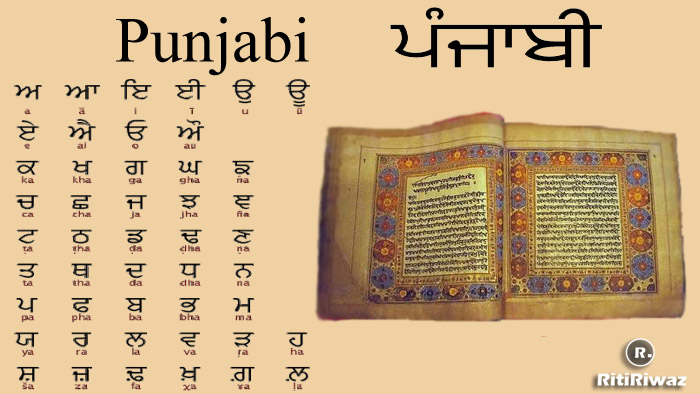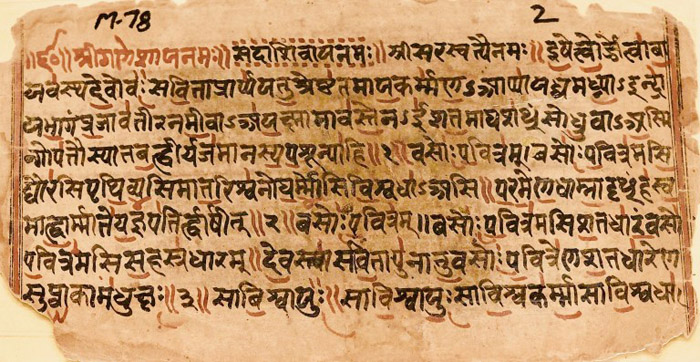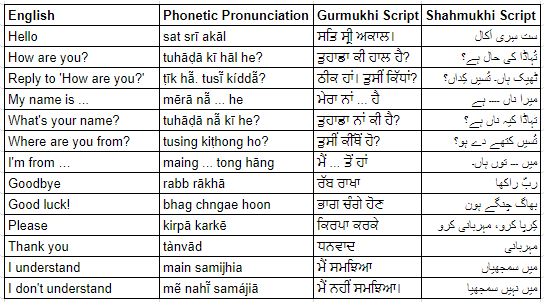
 The Vedic language has been called the oldest Punjabi, because it is nearer to Punjabi than Hindi. Classical Sanskrit evolved from the Vedic is the main source of Punjabi vocabulary and Sauraseni Prakrit is nearest to Classical Sanskrit.
The Vedic language has been called the oldest Punjabi, because it is nearer to Punjabi than Hindi. Classical Sanskrit evolved from the Vedic is the main source of Punjabi vocabulary and Sauraseni Prakrit is nearest to Classical Sanskrit.
By Durlabh Singh
“The Vedic language has been called the oldest Punjabi, because it is nearer to Punjabi than Hindi. Classical Sanskrit evolved from the Vedic is the main source of Punjabi vocabulary and Sauraseni Prakrit is nearest to Classical Sanskrit. It was Sauraseni Apabhramsa that gave birth to Punjabi and was also the mother of the saint’s language, known as sant-bhasa. ”
In the thinking mode of western people it is a fact as to reduce the millennia time. It started with the Christian ideology when the creation of the world was reduced to nearly 2000 years but now it has been vastly expanded to 16 billion years and even that is not accurate stat.
The Western Historian give date of Veda writing as 1500 BC but to an Indian scholar that is wholly inaccurate – at least by a few thousands of years. Same thing can be said about the Aryan race that originated in the steppes of Central Asia, in a vast are bordering Turkmenistan and Caspian Sea – North South division being bordering to near North Pole to Afghanistan in the south.
Over thousands of year, Aryans developed a language which under goad of sophistication branched out into Sanskrit, Greek and Latin. Sanskrit further developed into dialects and one such dialect was Punjabi written in Devnagri, which was an Indo- Iranian tribal language and slowly filtered into Afghanistan and then through the Khyber Pass onto Punjab and Indo- Gangetic planes.
Parallel with Mesopotamian and Egyptian civilization it became Indus Valley civilization, with its advanced urban planning, new scientific knowledge, the arts and other moral aspects of life. Few examples of its surviving sculpture pieces show very modernistic terracotta figurines of bull, girls with bangles and male portraits. It developed its own sign language which has remained un-deciphered so far.
Before advent of Guru Nanak, there were various poetical sensitive people active in the soil Punjab, trying to find the best way to reach divine and among these Naths & Yogis were prominent. They created their compositions in the language of common people and also in Apabhramsa but gradually due to their popularity the language of common people triumphed and manifested as sant-bhasa or language of the saints. It was a Punjabi dialect with words taken from Sanskrit, Prakrit, Apabrahmsa , Farsi and even Arabic due to Muslim invasions. It was the age of interaction between faith into a fusion and a new movement called Sufis came into being. Even Muslims were initiated into yogic cults & non-Muslims took freely from Muslim saints. These wanderers travelled from place to place, singing and preaching their message of human brotherhood.
 Prominent among them was Baba Farid who was a mystic of high order and composed his verses in Punjabi dialect and these were imbued with fervors of feeling for love of God and vagaries of human life. He wrote much but most of these were destroyed due to foreign invasions and others are preserved in Adi Granth of Sikhs.
Prominent among them was Baba Farid who was a mystic of high order and composed his verses in Punjabi dialect and these were imbued with fervors of feeling for love of God and vagaries of human life. He wrote much but most of these were destroyed due to foreign invasions and others are preserved in Adi Granth of Sikhs.
It is rumored that Farid went into the wilderness to meditate and took with him a piece of wood shaped like chapatti and bit into it whenever he felt pangs of hunger, thus severing his bonds with material things of the world.
Roti meri kath di, lavan mere bukh
Jina khadi chopri, ghane sahange dukh
Kale mere kapre, kala mera bhes
Gunaha bhariya main phira
Te loki akhan Dervish.
A new phase of purer linguistic was ushered in, when Guru Nanak arrived at the scene. He brought poetry for common folks. Metaphysically sophisticate and yet comprehensible to common people. A new spirit of equality between men and women, between Hindus and Muslims issued forth from his writing. He travelled far from North of India to the south as far as Shri Lanka and to Tibet in the North. His second phase of travel, took him westward to Afghanistan, Iran and through Middle East to Mecca in Saudi Arabia.
He gave a new identity to Punjabi language and to Punjabi people of all casts and creeds.
Small indeed is the honor won outside the Self by making pilgrimage and penance or being kind and giving charity to others.
O Self-Existent, Eternal Beauty (God)
Beyond thought, no thinking can conceive Him, not even minds of men should think for ages and ages.
He is one. His name is truth. He is creator of all.
The region of Mind is lit with God’s light
The music is endless, there is bliss untold.
This race or the tribe was named Aryan or Arya which means the noble one. These were proud people noble in deed and action, independent and unique. Their language represented the same, full of sophistication and speaking from heart to heart. The present day Sikhs are a fine example of their inheritance. Originally all Punjabis must have the same inheritance but among Hindus & Muslims there was a dilution. Caste system & division of people into high and low status, may be responsible among Hindus
Arabic & Semitic influences among Muslims took them to certain extent, towards the dilution.
In order to keep Punjabi language to its original impulses of form & expression, it was necessary to have it written down in its own script. Second Guru in 18th century, Guru Angad did a great service to the language by creating a Gurmukhi script which incorporates all the sounds used by Punjabi People.
 Modern Gurmukhi has thirty-eight consonants (vianjan), nine vowel symbols (lāga mātrā), two symbols for nasal sounds (bindī and ṭippī), and one symbol which duplicates the sound of any consonant (addak). In addition, four conjuncts are used: three subjoined forms of the consonants Rara, Haha and Vava, and one half-form of Yayya. Use of the conjunct forms of Vava and Yayya is increasingly scarce in modern contexts.
Modern Gurmukhi has thirty-eight consonants (vianjan), nine vowel symbols (lāga mātrā), two symbols for nasal sounds (bindī and ṭippī), and one symbol which duplicates the sound of any consonant (addak). In addition, four conjuncts are used: three subjoined forms of the consonants Rara, Haha and Vava, and one half-form of Yayya. Use of the conjunct forms of Vava and Yayya is increasingly scarce in modern contexts.
Gurmukhi was developed from the Landa script in part and was standardized by Guru Angad. The whole of Guru Granth Sahib is written in this script and this script is used by Sikhs and Hindus for writing the Punjabi language. Presently Gurumukhi Script is used in daily newspapers, literary magazines and books.
____________________